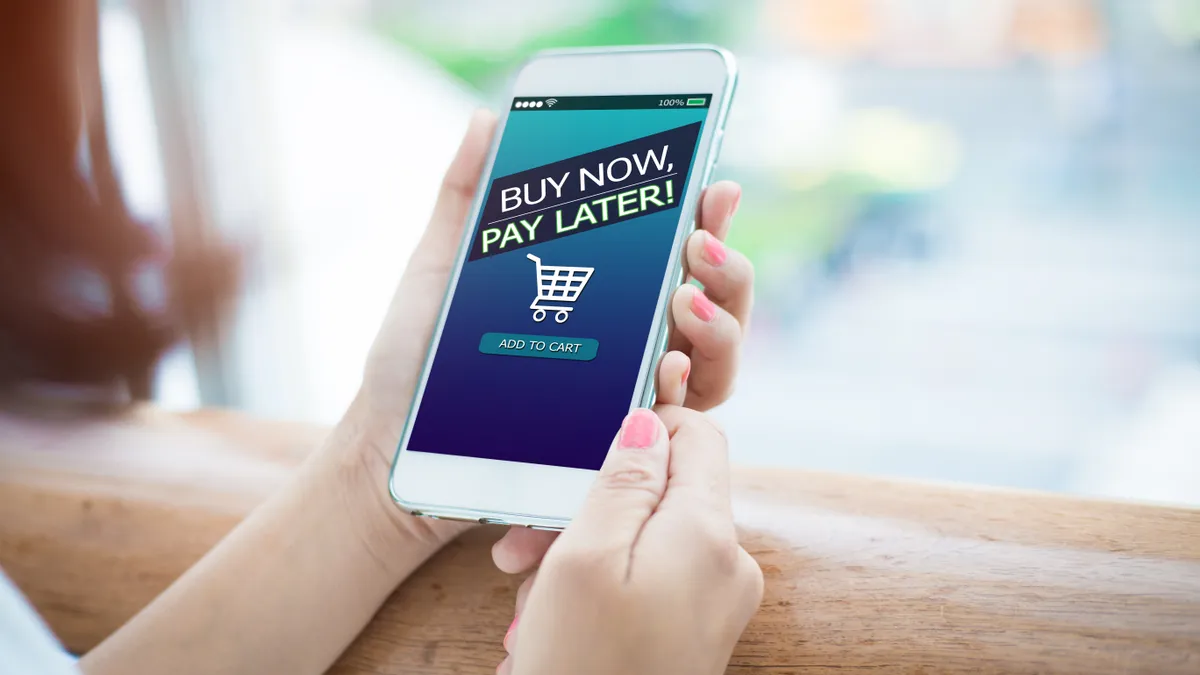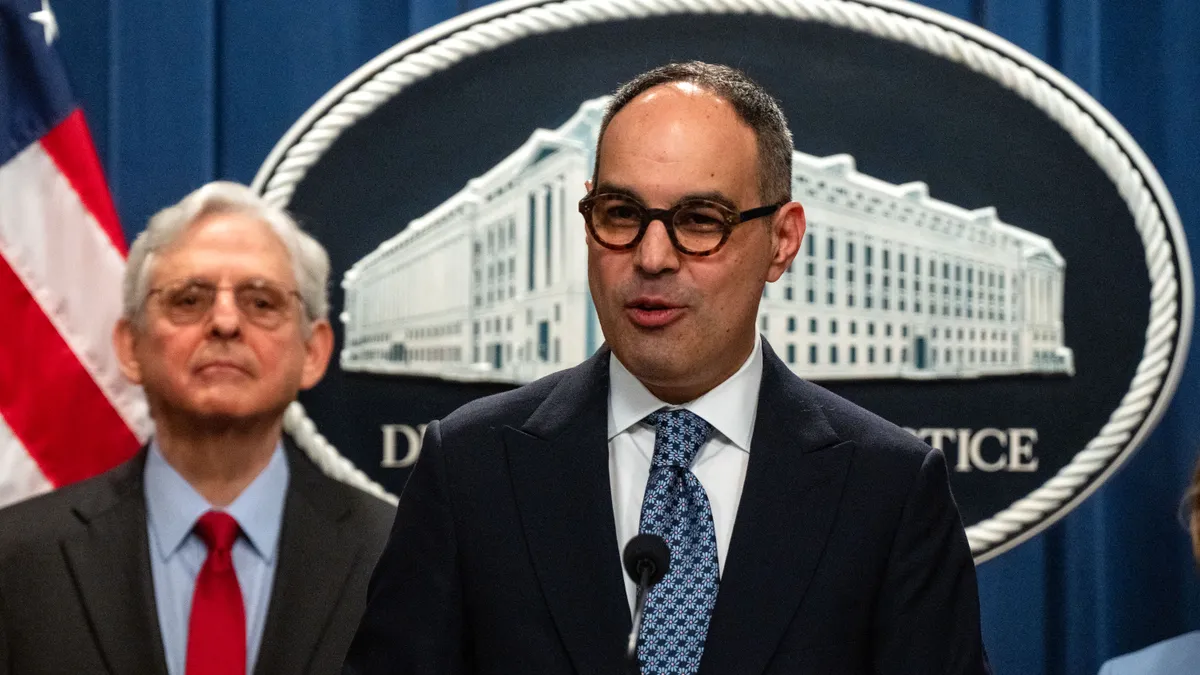Dive Brief:
- Buy now, pay later use doesn’t appear to notably affect a consumer’s credit profile in the short term, at least among users with established credit, according to a new report from the Consumer Finance Institute of the Federal Reserve Bank of Philadelphia.
- Researchers aimed to examine the tie between BNPL use and credit over time and ultimately determined that BNPL use “does not seem to greatly affect consumer’s credit in the short run,” they wrote in the discussion paper published this month.
- Users of BNPL pursue and obtain more new credit lines, but even with increased “shopping intensity,” BNPL users didn’t obtain a statistically significant amount of credit compared to non-users, researchers discovered.
Dive Insight:
The paper from the Philadelphia Fed’s Consumer Finance Institute combined anonymized survey data and credit bureau data gathered by market research firm Competiscan. It is “one of the first to document the relationships between BNPL use and traditional consumer credit characteristics,” authors Valeria Zeballos Doubinko and Tom Akana wrote. Data were gathered from 1,278 consumers, the report said.
Notably, the report’s data was collected during the COVID-19 pandemic’s BNPL boom and prior to the onset of the recent macroeconomic challenges that have weighed on consumers, such as soaring inflation.
Survey data was gathered in November 2021, while bureau data was collected in November 2020 and November 2021. Largely due to the unique nature of short-term installment loans, BNPL loan information isn’t widely reported to credit bureaus.
Consumers who didn’t appear in credit bureau data files or didn’t have enough data to generate a credit score were removed from the analysis, the paper’s authors said. Because a higher percentage of BNPL users didn't fit that credit profile, a higher share of them were dropped from the study.
BNPL users exhibited higher bank card use, had more past-due accounts and had larger balances that were past due, the paper noted. In comparing BNPL users and non-users, researchers determined a significant difference in shopping intensity and credit applications, with BNPL users pursuing more credit.
Researchers noted that “does not mean that BNPL use increases shopping behavior, but rather, it suggests there is persistence in the demand characteristics that explain the adoption of BNPL in the first place.”
The research also underscored the trend’s popularity with lower credit score borrowers. A typical BNPL user’s credit score was more than 50 points lower than a non-user’s score, although still in the prime category.
Consumers with super-prime credit scores – 720 or above – are about 20 percentage points less likely to tap BNPL than consumers in the lowest credit score group, which the report identifies as the 400–583 range.
“The likelihood of being a BNPL user decreases as a consumer’s credit score nears the highest deciles,” researchers wrote. The findings mirror those of the Consumer Financial Protection Bureau earlier this year, including that BNPL users had higher credit card use rates and lower credit scores.
The authors of the Philadelphia Fed paper noted that a larger pool of consumers, and a longer-term view, could yield different results. The share of American consumers using BNPL to finance online purchases has doubled since 2021, reaching 8% this year, according to recent data from market research firm YouGov.
The study adds to prior research on the burgeoning payment method. New BNPL users tend to accrue bank overdraft charges and credit card interest and fees more rapidly than non-users, a study released last October revealed. Harvard Business School professors determined consumers spend a larger share of their budget on retail goods when using BNPL, according to a paper released last year.











